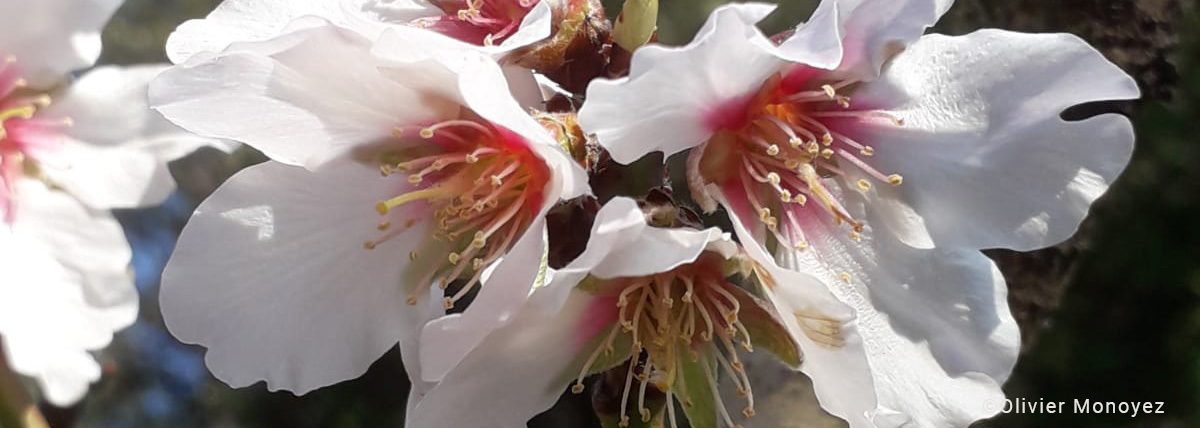
April 2022
AGENDA
Seminars
Evolution and diversity of Meiosis – Jean-René Huynh
Meiosis is a key step in sexual reproduction. It is indeed at the end of the two meiotic divisions that the male and female gametes are produced, the meeting of which will form a new organism. Each of these gametes contains a unique genome resulting from the genetic mixing of maternal and paternal chromosomes. It is therefore at this stage that new genomes are produced, subject to natural selection. The study of meiosis is therefore of interest to many areas of biology, ranging from the medical issues of sexual reproduction to the study of the molecular mechanisms of evolution. For this seminar on the Evolution and diversity of Meiosis, we have invited researchers working in very different fields (evolution, cell biology, genetics, modeling, structure, etc.) using various model organisms (Drosophila, mice, plants, jellyfish, worms, bombyx, mushrooms, zebrafish, salmon). We hope that this diversity of approaches will help us better understand the diversity of mechanisms of meiosis.
Nothing new under the sun ? The hypothesis of a permanence of structures beyond historical conjunctures – Pascal Ory
The debate around the apparent opposition between continuity and historical discontinuity is not new, and is not about to die out. Since, at least, Hegel, he has involved many of the most remarkable minds attached to subjecting “historical knowledge” to proper criticism. Moreover, the question can be broken down in many ways, depending on whether one endeavors in detail to measure the share of continuity which unites between them periods commonly presented as a break with each other or whether one adopts an overhanging point of view, on the scale of the long term, which is justified by the use of analogous or identical denominations. The assumption of structural continuity under the discontinuity of conjunctures itself seems to become a fundamental structure of contemporary historical reasoning. It is this hypothesis that we intend to test empirically in this seminar.
Residential studies
The invention of the music press – Anne Piéjus
This work, at the crossroads between musicology and history, intends to study the appearance of the musical press, a French ‘invention’ at the time of Louis XIV, by showing how the discourse on music (in full emergence of the institutionalization of literary criticism and performances) and the publication of notated music were intimately associated in a unique editorial and cultural project, that of the Mercure galant (1672-1710) . This study considers the question of the position of the periodical in the literary and musical editorial landscape, the cultural and social dimension of this “collaborative platform” and the political issues of press discourse – and in particular, the image of the kingdom that it helps to reflect.
Raymond Borde. Another history of cinema – Christophe Gauthier & Natacha Laurent
Raymond Borde (1920-2004) was the founder of the “Cinémathèque de Toulouse” in 1964. Historian and theoretician of film conservation, but also a writer, pamphleteer, film critic, filmmaker in his spare time, his active presence within the International Federation of Film Archives (FIAF) has left lasting traces there. But in many respects, the sometimes contradictory issues raised by the personality of Raymond Borde may have intervened in the ignorance of his career. The man, however, stood at the crossroads of three 20th century utopias: communism (he was a member of the Party from before the war to 1957), surrealism (close to Breton, he was expelled from the group in 1968) and cinephilia (in this case embodied by an idea of cinematographic heritage).
Residences
Author’s residency: Isabelle Tillerot
Her project: the plot of the fragment in the 18th century. Breakage and splinters of a trace.
In its contradictory and insolent truth, the fragment is both general and particular, and in everything specific. This project aims to fill the gap in its history in the 18th century. According to the first edition of the Dictionary of the French Academy in 1694, it is the piece of something that has been broken, shattered, and it is hardly said that considerable things. It is, in the figurative sense, the tiny part of a disappeared or unfinished text, which was or never was. Its relevance to the modern period is that it is never self-evident, whatever its appearances and purposes, and always seems to arise and slip away at the crossroads of other intrigues and desires. [find out more]
Photography Residency : Mohamed Camara
His project :
“My photographs can be read like boxes in comic strips. As a young man, I started dreaming about the world and photographing it through the curtains of the rooms where we spent our days in Bamako. My career has given me the chance to span the Mediterranean in both directions. During the Residence at Les Treilles, in the nearby countryside and in the surrounding villages, I propose to install elements designed in Bamako as points of passage between the worlds: bubbles filled with water in which I insert, physically, images of the beings that I miss, that I would like to have in dialogue with the fountains and springs of the place; curtains, embroidered in Bamako in preparation for the project and each copy of which will carry a story. Once installed in the estate using porticos, their play with the wind will reveal sub-narratives, actions staged in the landscapes chosen and framed beyond the curtains, nourished by the daily life of a Sahelian in residence: the adventures of Mohamed Camara in Tourtour!”
EXHIBITIONS
EXHIBITION “TREASURES FROM THE FONDATION DES TREILLES”
The Fondation de l’Hermitage in Lausanne is currently hosting Switzerland’s first exhibition featuring a selection of the greatest masterpieces from the Fondation des Treilles. You can go and visit it until the 29th of May. [Learn more]
